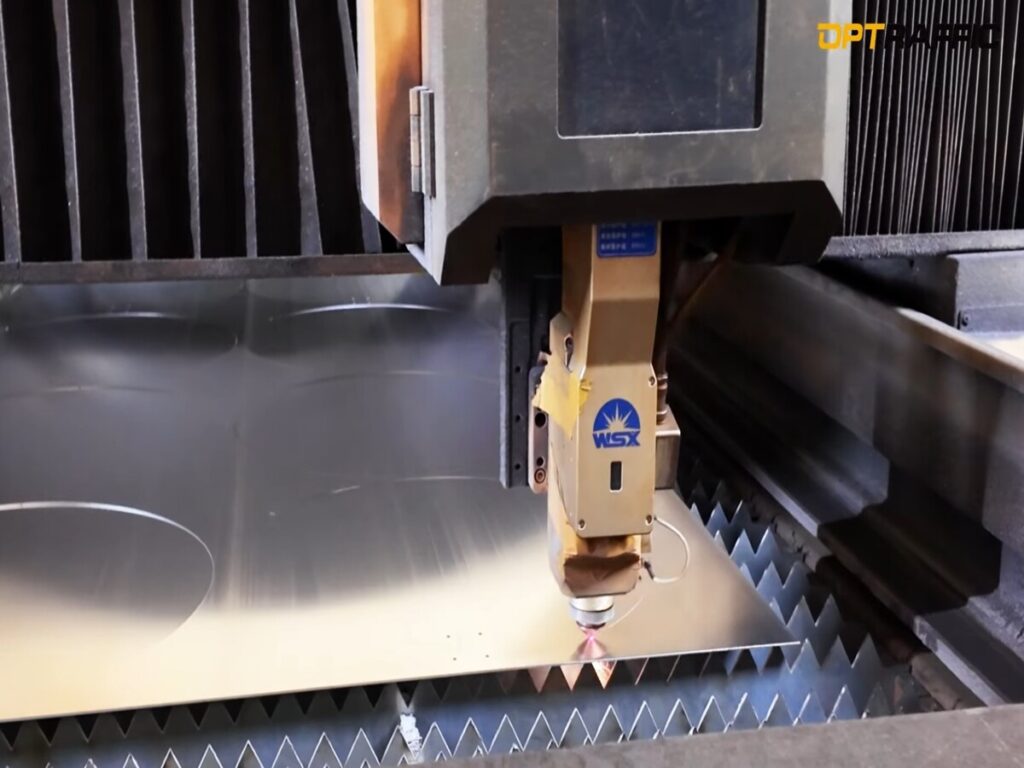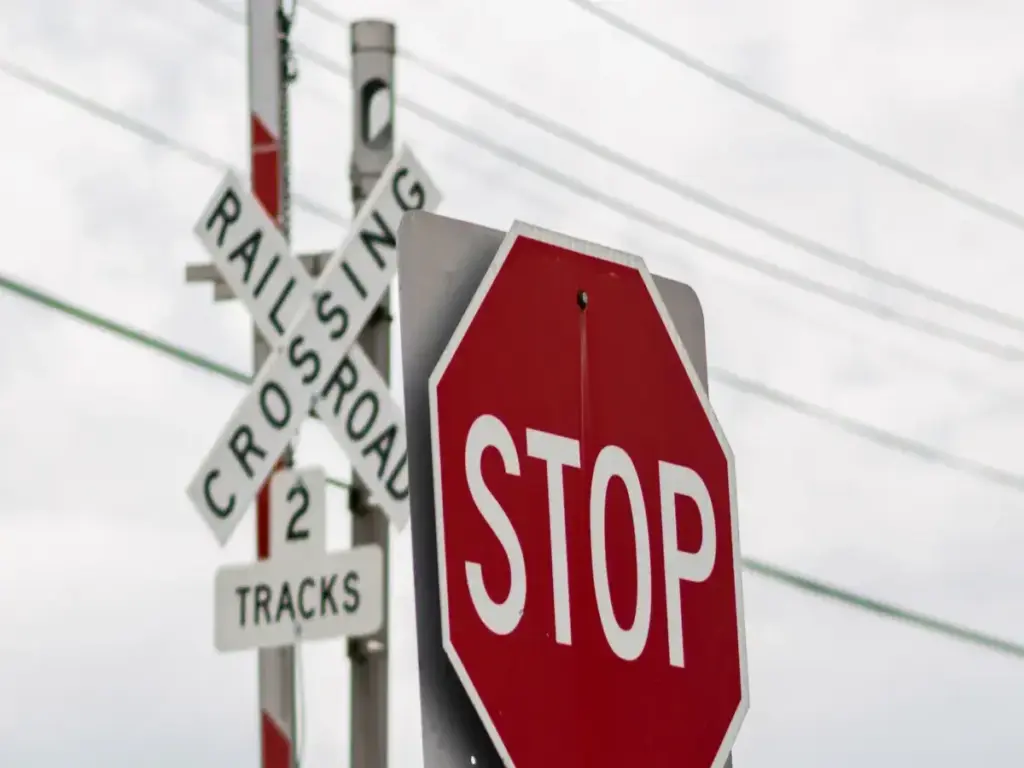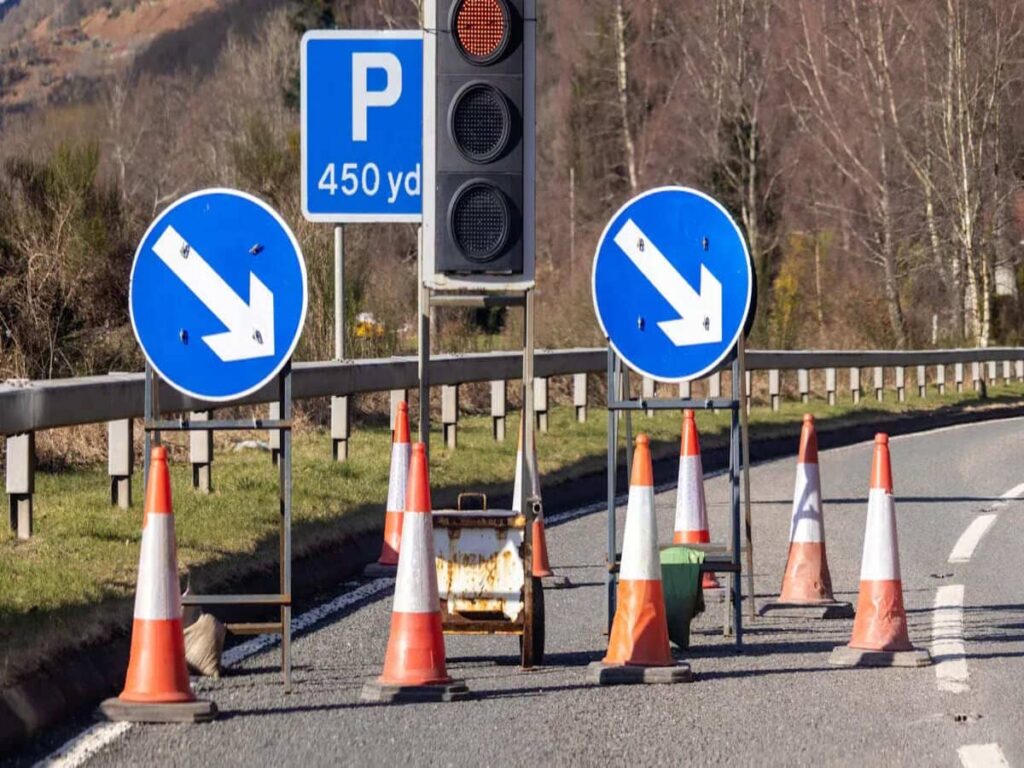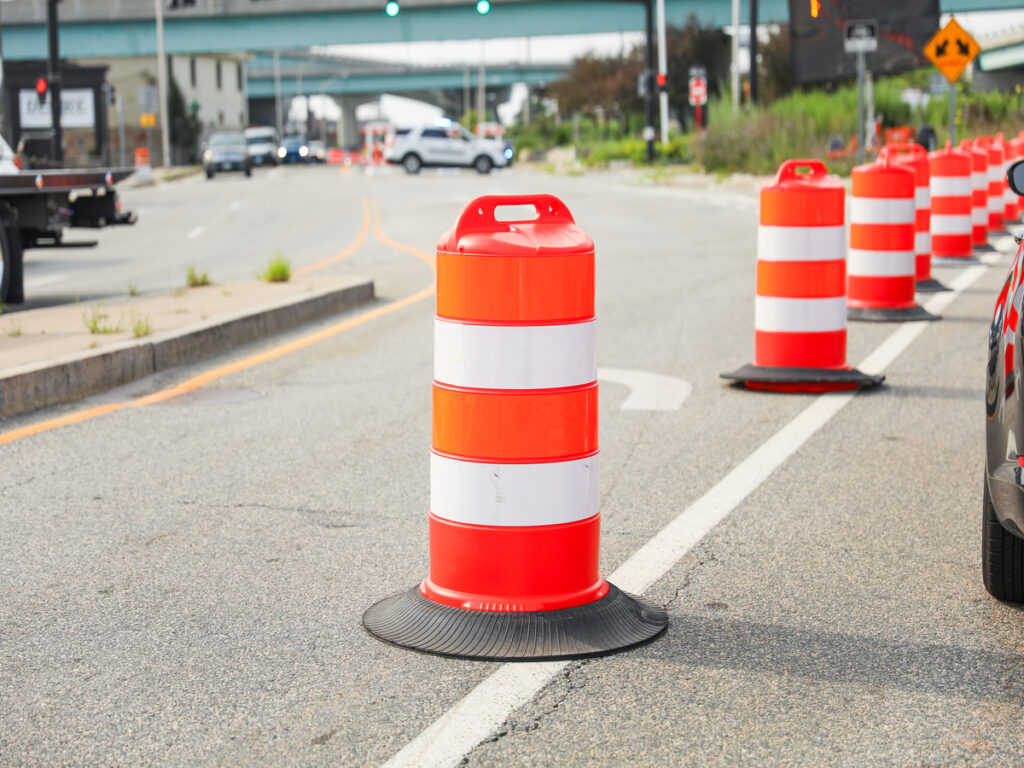
Verkehrstrommeln sind wichtige Hilfsmittel für die Verkehrssicherheit. Sie helfen Fahrern und Fußgängern, sich sicher durch Baustellen oder Umwege zu bewegen. Ihre leuchtenden Farben machen sie leicht zu sehen. Dies verringert die Zahl der Unfälle und sorgt für einen reibungslosen Verkehr. Verkehrssicherheitsinstrumente sind von entscheidender Bedeutung, da sie Leben retten und Straßenprobleme verhindern. Die Auswahl der richtigen Verkehrsfässer zum Verkauf wirkt sich auf die Sicherheit und den Projekterfolg aus. Gute Trommeln folgen den Vorschriften, zuletzt bei schwierigem Wetter, und einen langfristigen Mehrwert bieten. Auf der Suche nach Verkehrsfässern zum Verkauf, Wenn Sie wissen, worauf Sie achten müssen, können Sie die besten für Ihr Projekt auswählen.
OPTRAFFIC bietet eine breite Palette von hochwertige Verkehrstrommeln Entwickelt, um die höchsten Sicherheitsstandards zu erfüllen. Mit Mutcd-konform Produkte, die auf Langlebigkeit ausgelegt sind, OPTRAFFIC stellt sicher, dass jede Verkehrstrommel langlebig und zuverlässig ist, auch unter härtesten Bedingungen.
Erkunden OPTRAFFICs Auswahl an Verkehrstrommeln zum Verkauf um die perfekte Lösung für die Anforderungen Ihres Projekts zu finden.
Warum es wichtig ist, die richtigen Verkehrstrommeln zum Verkauf auszuwählen

Arbeitsbereiche sicherer machen und Regeln einhalten
Verkehrstrommeln tragen dazu bei, Arbeitsbereiche sicher zu halten. Ihre leuchtenden Farben und glänzenden Streifen machen sie leicht zu sehen, sogar nachts. Dies hilft Fahrern, sich sicher durch Baustellen zu bewegen und verringert das Unfallrisiko. Durch die Verwendung von Fässern, die den MUTCD- und DOT-Regeln entsprechen, bleibt Ihr Projekt legal und sicher. Durch die richtige Platzierung der Fässer werden Arbeitsbereiche vom Verkehr getrennt, Schutz der Arbeiter und Fahrer.
In Bereichen mit hohem Verkehrsaufkommen, Trommeln funktionieren aus Sicherheitsgründen gut. Ihre glänzenden Bänder leiten den Fahrer, Verwirrung und Unfälle reduzieren. Arbeiter fühlen sich sicherer, wenn Trommeln Baustellen absperren. Daher sind Trommeln ein Muss, um bei Projekten die Sicherheit aller zu gewährleisten.
Warum zum Verkauf stehende Verkehrstrommeln in manchen Fällen besser sind als Kegel
Trommeln funktionieren bei bestimmten Arbeiten oft besser als Kegel. Zum Beispiel, auf Autobahnen, Verkehrssicherheitstrommeln leiten den Verkehr besser. Durch ihre größere Größe und die glänzenden Teile sind sie aus der Ferne leichter zu erkennen. Dadurch haben Fahrer mehr Zeit, langsamer zu fahren und die Spur zu wechseln.
Hier ist ein einfacher Vergleich von Trommeln und Kegeln:
| Besonderheit | Schlagzeug | Kegel |
|---|---|---|
| Sichtweite | Von weitem gut zu erkennen | Schwerer zu sehen |
| Spurwechsel | Hilft Fahrern, früher die Spur zu wechseln | Weniger hilfreich |
| Geschwindigkeitsreduzierung | Hilft, den Verkehr zu verlangsamen | Nicht so effektiv |
| Gefahr bei Treffer | Kann bei Treffer gefährlich sein | Sicherer, wenn es getroffen wird |
Bei einem Autobahneinsatz, Leuchtend orangefarbene Trommeln mit glänzenden Bändern halfen den Fahrern, sich durch einen Arbeitsbereich zu bewegen. Dieser Aufbau reduzierte die Verwirrung und verhinderte viele Unfälle. Trommeln schaffen außerdem bessere Barrieren zwischen Verkehrs- und Arbeitsbereichen, Damit sind sie die beste Wahl für Risikobereiche.
Erfahren Sie mehr darüber, wie Trommeln im Vergleich zu Kegeln aussehen und welches für Ihr Projekt das Richtige ist, Schauen Sie sich unseren ausführlichen Vergleich an Verkehrskegel vs. Verkehrskontrolltrommeln: Was ist am besten für Ihre Bedürfnisse?.
Langfristige Vorteile guter Verkehrstrommeln
Der Kauf guter Verkehrstrommeln zum Verkauf spart im Laufe der Zeit Geld. Sie bestehen aus starken Materialien wie HDPE, die auch schlechtem Wetter und Stößen standhalten. Das bedeutet, dass Sie sie nicht oft ersetzen müssen, Kosten sparen. Hochwertige Fässer erfüllen auch die Sicherheitsvorschriften, Die Straßen sicherer machen und das Unfallrisiko senken.
Sie können Trommeln so anpassen, dass sie das Logo oder die Farben Ihres Unternehmens zeigen. Dadurch sticht Ihre Marke in belebten Bereichen hervor. Es zeigt auch Ihren Fokus auf Sicherheit und Professionalität, die Ihrem Unternehmen zum Wachstum verhelfen können.
| Nutzen | Beschreibung |
|---|---|
| Bessere Sicherheit | Starke Trommeln unterliegen Sicherheitsregeln, Unfälle verringern und die Verkehrssicherheit verbessern. |
| Lang anhaltende | Hergestellt aus robusten Materialien, Sie halten länger und der Austausch kostet weniger. |
| Markenbekanntheit | Individuelle Trommeln mit Logos oder Farben machen Ihr Unternehmen für Autofahrer sichtbar. |
Die Wahl der richtigen Verkehrstrommel sorgt für die Sicherheit der Menschen und bietet ein gutes Preis-Leistungs-Verhältnis. Es ist eine kluge Wahl für jedes Projekt, das zuverlässige Sicherheitswerkzeuge benötigt.
Arten von Verkehrstrommeln zum Verkauf und ihre Varianten
Standardfässer mit reflektierender Folie
Standard-Verkehrstrommeln helfen Fahrern, sich sicher in Arbeitsbereichen zu bewegen. Ihre hell orange Farbe und glänzende Streifen machen sie leicht zu sehen. Diese Trommeln markieren Fahrspuren, Umwege, oder Bereiche, in die Menschen nicht gehen sollten. Die glänzenden Streifen gibt es in verschiedenen Ausführungen, wie Engineer Grade, Hoher Intensität, und Diamantqualität. Jeder Typ funktioniert besser an dunkleren Orten oder nachts.
Diese Kunststofffässer bestehen aus starken Materialien wie HDPE. Sie trotzen schlechtem Wetter und Stößen, ohne zu brechen. Aufgrund ihrer robusten Bauweise sind sie langlebig. Wenn Ihr Projekt nachts oder in dunklen Bereichen stattfindet, Wählen Sie Trommeln mit hochwertigen Glanzstreifen.
Trommeln mit gewichteter Basis für Starkwind- oder Autobahnzonen
Trommeln mit beschwerter Basis bleiben in windigen oder stark befahrenen Bereichen stabil. Sie funktionieren gut an Orten mit starkem Wind oder auf Autobahnen. Diese Trommeln haben schwere Basen, wie Reifenringe oder beschwertes Plastik, damit sie nicht umfallen. Ihr Gewicht hilft dem Fahrer, sie klar zu sehen und sicher zu bleiben.
Bei Autobahnprojekten kommen diese Trommeln zum Einsatz, weil sie groß und leicht zu erkennen sind. Ihre glänzenden Bänder helfen Autofahrern dabei, langsamer zu werden und sicher die Spur zu wechseln. Trommeln mit beschwertem Boden eignen sich hervorragend für den Langzeiteinsatz, bei dem Stabilität sehr wichtig ist.
Zusammenklappbar / Stapelbare Fässer für Mobilität
Zusammenklappbare und stapelbare Fässer lassen sich leicht bewegen und lagern. Sie eignen sich gut für Projekte, bei denen Sie häufig auf- und abbauen müssen. Stapelbare Fässer sind robust und halten rauen Bedingungen stand. Zusammenklappbare Fässer sind leicht und einfach zu transportieren, Damit eignen sie sich perfekt für kurzfristige Jobs.
Hier ist ein einfacher Vergleich:
| Art der Trommel | Haltbarkeit | Portabilität |
|---|---|---|
| Stapelbare Fässer | Stark und kann mit schlechtem Wetter umgehen. | Im gestapelten Zustand schwerer zu bewegen. |
| Einziehbare Trommeln | Gut für den kurzfristigen Einsatz, Hergestellt aus robusten Materialien. | Leicht zu transportieren und aufzubewahren durch zusammenklappbares Design. |
Zusammenklappbare Fässer eignen sich hervorragend für kleine Projekte oder Orte mit wenig Stauraum. Durch ihr leichtes Design sind sie einfach zu bedienen und sparen Zeit bei der Einrichtung.
HDPE vs. LDPE: Welches Material passt am besten zu Ihrem Projekt??
Das Material der Verkehrstrommeln beeinflusst deren Festigkeit. Zwei gängige Materialien sind hochdichtes Polyethylen (HDPE) und Polyethylen niedriger Dichte (LDPE). Jedes eignet sich gut für verschiedene Arten von Projekten.
HDPE ist sehr stark und steif. Es eignet sich hervorragend für schwierige Aufgaben. Es kann starkem Wind und Stößen durch Autos standhalten. Dadurch halten HDPE-Trommeln auch bei schlechtem Wetter länger. HDPE funktioniert auch an heißen Orten gut, da es hoher Hitze standhält.
LDPE ist leichter und biegsamer. Es ist einfacher zu bewegen und zu tragen. Aber, LDPE ist nicht so stark und kann unter Druck brechen. Es eignet sich am besten für kurze Arbeiten oder wenn Sie etwas benötigen, das sich leicht transportieren lässt. LDPE schmilzt bei geringerer Hitze, Daher eignet es sich gut für heißversiegelte Anwendungen.
Hier ist ein einfacher Vergleich:
| Besonderheit | HDPE | LDPE |
|---|---|---|
| Stärke | Sehr stark und steif | Weniger stark, biegsamer |
| Haltbarkeit | Hält lange, geht gut mit Stress um | Lässt sich leichter brechen, Weniger langlebig |
| Verwendung | Große Arbeiten wie Rohre oder Behälter | Kleine Gegenstände wie Taschen oder Tücher |
| Hitzebeständigkeit | Bewältigt hohe Hitze | Schmilzt bei geringerer Hitze |
| Recycling | Leichter zu recyceln | Schwieriger zu recyceln |
Für langfristige oder anspruchsvolle Einsätze, Wählen Sie HDPE. Für kurzfristige oder leicht zu versetzende Aufbauten, LDPE funktioniert besser. Die Kenntnis dieser Materialien hilft Ihnen bei der Auswahl der richtigen Trommeln für Sicherheit und Erfolg. Um tiefer in das Wie einzutauchen LDPE Verbessert die Leistung der Verkehrstrommel und warum sie für bestimmte Anwendungen eine gute Wahl ist, Schauen Sie sich unseren ausführlichen Artikel an Warum das LDPE-Zeichen auf Verkehrstrommeln wichtig ist.
So wählen Sie die richtige Verkehrstrommel für Ihr Projekt aus
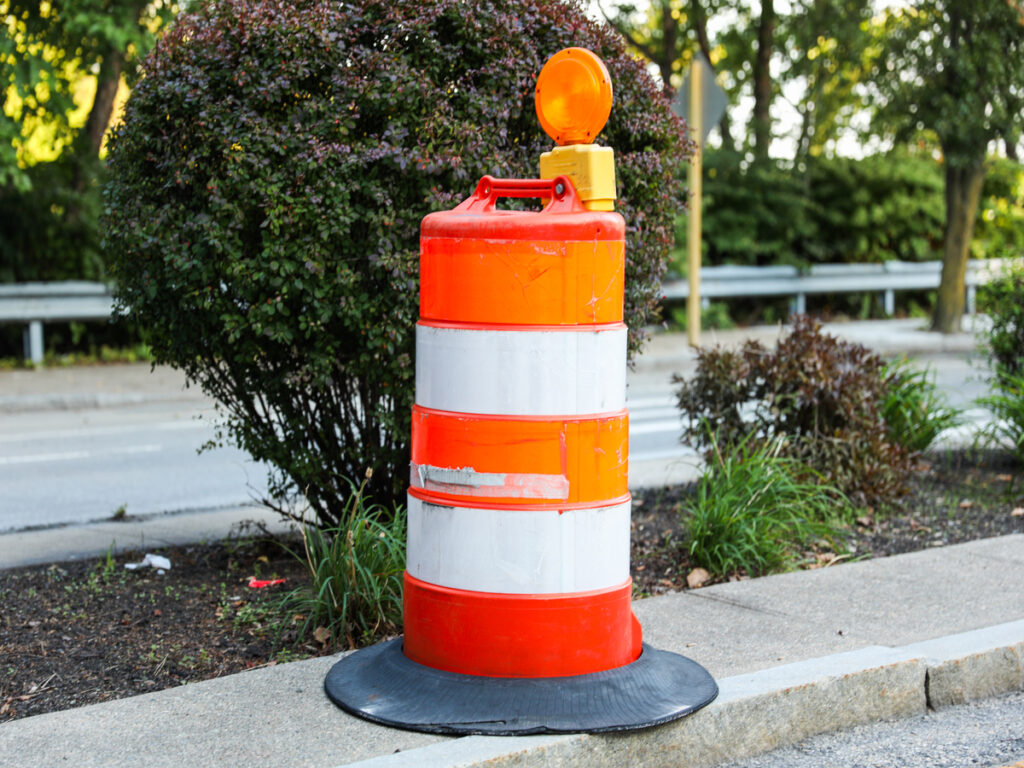
MUTCD & DOT-Konformität
Beim Kommissionieren von Verkehrsfässern, Stellen Sie sicher, dass sie folgen MUTCD Und PUNKT Regeln. Diese Regeln stellen sicher, dass die Trommeln sicher sind und gut funktionieren. Durch die Verwendung zugelassener Fässer werden rechtliche Probleme vermieden und die Sicherheit von Arbeitern und Fahrern gewährleistet.
Hier sind einige wichtige MUTCD- und DOT-Regeln für Verkehrstrommeln:
| Spezifikation | Erfordernis |
|---|---|
| Höhe | Mindestens 36 Zoll groß |
| Breite | Mindestens 18 Zoll breit |
| Material | Leicht, biegerlich (kein Metall erlaubt) |
| Markierungen | Orange-weiße Streifen, 4-6 Zoll breit |
| Streifenanzahl | Mindestens zwei orangefarbene und zwei weiße Streifen, oberer Streifen orange |
| Nicht retroreflektierter Raum | Nicht mehr als 3 Zoll breit |
| Top-Design | Geschlossene Oberseiten, um die Ansammlung von Schmutz zu verhindern |
| Gewichtung | Sollte bei einem Schlag nicht zu schwer sein |
| Abflusslöcher | Wird in Frostgebieten benötigt, um Wasserschäden zu verhindern |
Wenn Sie diese Regeln befolgen, stellen Sie sicher, dass Ihre Trommeln sicher sind und den Standards entsprechen. Das macht sie für jedes Projekt zuverlässig.
Haltbarkeit & Umweltwiderstand
Bei der Auswahl von Verkehrstrommeln ist die Haltbarkeit von entscheidender Bedeutung. Trommeln sind hartem Wetter ausgesetzt, Abstürze, und Sonnenlicht. Starke Materialien wie HDPE verhindern die Rissbildung, Fading, und Biegen. Dadurch halten sie länger und arbeiten unter schwierigen Bedingungen besser.
Wichtig ist auch die Witterungsbeständigkeit. UV-beständige Fässer behalten ihre leuchtenden Farben in der Sonne. In kalten Gegenden, Abflusslöcher verhindern, dass Wasser im Inneren gefriert und die Trommel zerbricht. Stark pflücken, Wetterfeste Fässer sparen Geld und sorgen für gleichbleibende Sicherheit.
Sichtbarkeitsoptionen: Reflektierende Noten, Farben
Für die Verkehrssicherheit ist die Sicht von entscheidender Bedeutung. Trommeln müssen gut sichtbar sein, sogar nachts. Reflektierende Folie erhöht die Sichtbarkeit. Zu den Optionen gehört die Ingenieurstufe, Hoher Intensität, und Diamantqualität. Diamond Grade eignet sich am besten für dunkle oder sich schnell bewegende Bereiche.
Auch die Trommelfarbe ist wichtig. Leuchtendes Orange hebt sich von den meisten Hintergründen ab. Durch die orange-weißen Streifen sind sie noch besser erkennbar. Für dunkle oder riskante Bereiche, Wählen Sie Fässer mit hochreflektierender Folie für höchste Sicherheit.
Indem man sich auf Regeln konzentriert, Stärke, und Sichtbarkeit, Sie können Trommeln auswählen, die sicher sind und den Anforderungen Ihres Projekts entsprechen.
Basisdesign: Halten Sie die Trommeln unter allen Bedingungen stabil
Die Basis einer Verkehrstrommel sorgt dafür, dass sie stabil bleibt. Wählen Sie eine Basis, die den Anforderungen Ihres Projekts entspricht. Eine starke Basis hält die Trommel aufrecht, selbst an schwierigen Orten wie Autobahnen oder windigen Gebieten.
Hier sind gängige Basistypen:
- Reifenringbasis: Diese Basis verwendet einen recycelten Reifenring für das Gewicht. Es funktioniert gut an windigen Orten oder dort, wo der Verkehr schnell ist. Der Reifenring sorgt dafür, dass die Trommel stabil und dennoch leicht zu bewegen ist.
- Beschwerter Kunststoffsockel: Hergestellt aus starkem Kunststoff, Diese Basis hält Sand oder Wasser als Gewicht. Es eignet sich hervorragend für Projekte, die einen schnellen Auf- und Abbau erfordern.
- Snap-On-Basis: Dieser Lichtsockel wird auf der Trommel befestigt. It’s good for short jobs but may not hold up in windy areas.
Tipp: For highways or windy spots, pick a heavier base like a tire ring or weighted plastic. This keeps the drum steady and visible.
Choosing the right base makes drums safer and less likely to fall. It also saves time when setting them up.
Deployment context: Short-term vs long-term projects
The length of your project decides which drum to use. Short and long projects need different types of drums.
- Kurzfristige Nutzung: For quick setups like parking or small repairs, light drums are best. Collapsible or stackable drums are easy to carry and store. Engineer Grade reflective sheeting works fine for visibility.
- Langfristige Verwendung: For big jobs like highway work, strong drums are key. HDPE drums with high-intensity or diamond-grade reflective sheeting last longer. Beschwerte Sockel sorgen für die nötige Stabilität für die Sicherheit.
| Bereitstellungstyp | Beste Funktionen | Beispielanwendung |
|---|---|---|
| Kurzfristig | Licht, zusammenklappbar, Ingenieurqualität | Parkplätze, kleine Umwege |
| Langfristig | Stark, gewichtete Basis, Diamantqualität | Autobahnarbeiten, Konstruktion |
Denken Sie an die Länge Ihres Projekts, um die richtige Trommel auszuwählen. Das sorgt für Sicherheit, effizient, und kostenfreundlich.
Kauf von Verkehrstrommeln zum Verkauf: Was Sie vor dem Kauf wissen sollten
Suche nach vertrauenswürdigen Lieferanten oder Herstellern
Durch die Auswahl des richtigen Anbieters erhalten Sie zuverlässige Traffic-Tools. Wählen Sie Unternehmen, die dafür bekannt sind, starke Verkehrssperren zu errichten. Prüfen Sie, ob sie sich auf die vorübergehende Verkehrskontrolle konzentrieren und die Branchenregeln einhalten. Gute Lieferanten teilen Produktdetails, einschließlich MUTCD- und DOT-Konformität.
Fragen Sie nach ihrer Arbeit an großen Projekten. Lieferanten mit Autobahn- oder Langzeitprojekterfahrung wissen, was benötigt wird. Sie können Trommeln vorschlagen, die zu Ihrem Projekt passen. Auch, Fragen Sie nach Garantien. Warranties show the supplier trusts their products and protect your money.
Verifying Quality and Certification Standards
Check quality and certifications before buying traffic drums. Good traffic tools must follow strict safety rules. Use this checklist to check quality:
- Look for proper labels with FHWA codes and maker names.
- Make sure Category 3 devices are on the approved safety list.
- Check that reflective sheeting is the same on all drums.
- Ensure all devices stay in good shape during the project.
- Don’t mix different traffic tools on the same road.
- Confirm the devices meet contract rules.
Ask for Form TR-0030 to confirm the drums meet standards. Checking these details avoids safety problems and legal trouble.
Comparing Reviews and Past Project Case Studies
Rezensionen und Fallstudien zeigen, wie Verkehrstools im wirklichen Leben funktionieren. Lesen Sie Feedback von anderen, die die gleichen Barrikaden genutzt haben. In guten Bewertungen wird häufig die Stärke erwähnt, Sichtweite, und einfache Bedienung.
Fallstudien erklären, wie Trommeln an verschiedenen Orten funktionieren. Zum Beispiel, Autobahnprojekte können zeigen, wie beschwerte Trommeln im Wind stabil bleiben. Vergleichen Sie Fallstudien, um Muster in der Produktqualität und der Lieferantenhilfe zu erkennen.
Tipp: Suchen Sie nach Bewertungen zur Langzeitanwendung und zur MUTCD-Konformität. Diese zeigen, ob das Schlagzeug zu Ihrem Projekt passt.
Durch das Lesen von Rezensionen und Fallstudien, Sie können Trommeln auswählen, die sicher sind und gut funktionieren.
Anfordern von Mustern oder Angeboten
Vor dem Kauf: Verkehrstrommeln zu verkaufen, Bitten Sie Lieferanten um Muster oder Angebote. Dies hilft Ihnen, die Qualität des Produkts zu überprüfen und festzustellen, ob es Ihren Anforderungen entspricht. Mithilfe von Proben können Sie das Material untersuchen, Stärke, und glänzende Streifen dicht. Sie können auch testen, wie die Trommel mit Sonnenlicht und Stößen umgeht.
Wenn Sie um ein Angebot bitten, Teilen Sie Details zu Ihrem Projekt mit. Geben Sie an, wie viele Trommeln Sie benötigen, die Art der glänzenden Streifen, und alle grundlegenden Designanforderungen. Dies hilft dem Lieferanten, einen korrekten Preis anzugeben. Einige Lieferanten senken möglicherweise die Kosten für Großaufträge, Geben Sie daher Ihre Projektgröße an.
Tipp: Fragen Sie, ob kostenlose Muster oder Testversionen angeboten werden. Das spart Geld und stellt sicher, dass das Produkt gut funktioniert.
Hier ist eine einfache Checkliste für Muster oder Angebote:
- Geben Sie den Trommeltyp an (Z.B., HDPE, gewichtete Basis).
- Erwähnen Sie die glänzende Streifensorte (Ingenieur, Hoher Intensität, oder Diamant).
- Teilen Sie den Zeitplan und den Standort Ihres Projekts mit.
- Erkundigen Sie sich nach Versandkosten und Lieferzeiten.
- Prüfen Sie, ob Garantien oder Rückgabemöglichkeiten bestehen.
Durch die Ausführung dieser Schritte, Sie können mit Bedacht wählen und spätere Probleme vermeiden.
Ausgleich zwischen Budget und langfristigem Wert
Pflücken Verkehrstrommeln zu verkaufen kommt es nicht nur auf den Preis an. Billigere Optionen scheinen vielleicht gut zu sein, gehen aber oft leicht kaputt oder verstoßen gegen Sicherheitsvorschriften. Mehr Geld für starke Trommeln auszugeben, bedeutet weniger Austausch und bessere Leistung, im Laufe der Zeit Geld sparen.
Denken Sie bei der Kostenprüfung auch an Material und Design. HDPE-Trommeln halten länger und vertragen schlechtes Wetter besser als LDPE-Trommeln. Beschwerte Sockel halten die Trommeln an windigen Stellen stabil, Verringerung von Unfallrisiken. Diese Funktionen kosten im Vorfeld mehr, sparen aber später Geld.
Notiz: Fässer, die nicht den Regeln entsprechen, können Bußgelder oder Sicherheitsprobleme nach sich ziehen, kosten mehr als genehmigte.
Kosten und Wert in Einklang bringen, Schauen Sie sich die Gesamtkosten an. Dazu gehört auch der Kauf, Festsetzung, und Trommeln austauschen. Finden Sie Lieferanten mit Garantien oder Mengenrabatten, um das beste Angebot zu erhalten.
Durch die Auswahl hochwertiger und regelkonformer Trommeln, Sie können sicher bleiben und Geld sparen.
Häufige Fragen zu Verkehrstrommeln (FAQ)
Sind alle Verkehrstrommeln gleich groß??
Verkehrstrommeln gibt es in verschiedenen Größen, sie müssen jedoch den Sicherheitsvorschriften entsprechen. Laut MUTCD sollten Standard-Verkehrstrommeln zum Verkauf angeboten werden 36 Zoll groß und 18 Zoll breit. Durch diese Größe sind sie für Autofahrer aus der Ferne gut erkennbar. Kleinere Fässer sind möglicherweise nicht so gut sichtbar, insbesondere in Bereichen mit schnellem Verkehr.
Überprüfen Sie immer die Trommelgröße entsprechend Ihren Projektanforderungen. Größere Trommeln funktionieren besser auf Autobahnen oder Schnellstraßen. Kleinere eignen sich gut für Parkplätze oder langsame Zonen. Durch die Wahl der richtigen Größe bleibt die Trommel sicher und nützlich.
Kann ich in Baustellen Kegel anstelle von Trommeln verwenden??
Kegel und Trommeln leiten den Verkehr, sind aber nicht immer austauschbar. Trommeln sind größer, stabiler, und leichter zu sehen, Dadurch sind sie besser für Baugebiete geeignet. Tests zeigen, dass Trommeln den Fahrern helfen, sicher die Spur zu wechseln und Verwirrung zu vermeiden.
Hier ist ein kurzer Vergleich:
| Besonderheit | Verkehrskegel | Verkehrsedrums |
|---|---|---|
| Sichtweite | Tagsüber gut; Größere Zapfen sind besser. | Tag und Nacht von weitem gut sichtbar. |
| Spurwechselverhalten | Funktioniert gut für Spurwechsel; 2-Bandkegel sind am besten. | Hilft Fahrern, die Spur früher zu wechseln als Kegel. |
| Sicherheitsauswirkungen | Kleine Kegel sind für schnelle Straßen nicht sicher. | Reduziert die Geschwindigkeit, kann aber bei einem Treffer riskant sein. |
Fässer sind sicherer für schnelle Straßen oder lange Projekte. Kegel eignen sich gut für kurze oder langsame Arbeiten, haben aber nicht die Stärke und Sichtbarkeit von Trommeln.
Was ist der Unterschied zwischen Class 1 und Klasse 2 Blatt?
Reflektierende Folien heben Verkehrsfässer hervor, Besonders nachts. Klasse 1 und Klasse 2 Folien unterscheiden sich in Helligkeit und Verwendung. Klasse 1, oder Typ I, Erfüllt grundlegende Helligkeitsstufen. Es eignet sich für temporäre Schilder oder kurzfristige Verkehrskontrollen.
Klasse 2, oder Typ II, ist heller und dauert länger. Es wird für dauerhafte Schilder und langfristige Projekte verwendet. Diese Folie eignet sich besser für dunkle Bereiche oder Orte, an denen eine gute Sichtbarkeit erforderlich ist.
Zu den wichtigsten Unterschieden gehören::
- Klasse 1 ist für kurzfristige oder weniger wichtige Zwecke bestimmt.
- Klasse 2 ist heller und besser für langfristige oder hohe Sichtbarkeitsanforderungen.
Wählen Sie die richtige Folie basierend darauf, wie lang und sichtbar Ihr Projekt sein muss. Für höchste Sicherheit, Verwenden Sie Klasse 2 in riskanten oder langfristigen Bereichen.
Das Recht auswählen Verkehrstrommeln zu verkaufen sorgt dafür, dass Ihr Projekt sicher und effizient bleibt. Robuste Materialien und leuchtende Farben tragen zur Schaffung sicherer Arbeitsbereiche bei. Das Befolgen von Regeln wie der MUTCD-Konformität ist sehr wichtig. Reflektierende Streifen und Standfüße erhöhen zusätzlich die Sicherheit.
Um einen umfassenden Überblick über Verkehrstrommeln und deren Einbindung in Verkehrsmanagement und Bausicherheit zu erhalten, Besuchen Sie unseren Hauptführer: Sicherheitsrommeln: Ein umfassender Leitfaden für ihre Rolle bei der Verkehrsabgrenzung und der Verkehrssicherheit.



